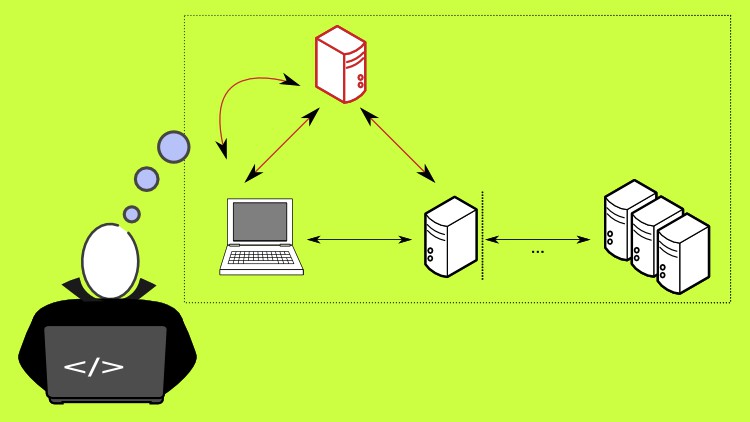Secure Programming of Web Applications - Developers and TPMs

Why take this course?
_Course Title: Secure Programming of Web Applications - Developers and Technical Project Managers 🛡️
_Course Headline: Mastering Web Application Security for Software Developers and Technical Project Managers
Unlock the Secrets to Fortifying Your Web Applications!
Introduction to Web Application Security
In today's digital landscape, web applications are not just gateways to services; they are often the front line of defense against cyber threats. As we increasingly rely on web-based platforms for our business operations and personal interactions, it has become imperative to understand the principles of secure programming to protect these critical assets.
Why This Course?
- Statistic Alert: Every week, headlines report successful attacks on major web applications, highlighting the vulnerability of these systems. 🚨
- Complexity of Security: As technology advances at a breakneck pace, maintaining robust IT security is a daunting task for even the largest enterprises with dedicated security teams.
- Consequences of Negligence: A single security breach can tarnish a brand's reputation and lead to significant legal and financial repercussions. 🚫
Course Overview
This comprehensive course is meticulously designed for both Software Developers and Technical Project Managers who aim to enhance the security of their web applications. It covers a wide array of topics, providing you with an in-depth understanding of common vulnerabilities and effective strategies to mitigate them.
Typical Vulnerabilities Overview
- Code/Command Injection
- (No)SQL Code Injection
- Cross-Site Request Forgery (CSRF)
- Cross-Site Scripting (XSS)
- Open Redirection
- File Inclusion / Directory Traversal
- Clickjacking
- Session-Hijacking
- Information Disclosure
- Attacks on Weaknesses of the Authentication
- Denial of Service (DoS)
- Middleware Vulnerabilities
- Third-Party Software Risks
Secure Programming in Practice
Throughout the course, we delve into each vulnerability, exploring its causes and background. You'll learn about secure programming practices that can prevent these security issues from arising in the first place. 🔐
Hands-On with Web Application Vulnerabilities
We'll examine real-world examples of vulnerabilities like SQL injection, CSRF, and XSS, understanding their mechanisms and how to defend against them. You'll gain practical knowledge on how to write code that stands up to even the most savvy cyber attacks. 🛡️
Course Content Breakdown
- Introduction to Web Application Security: Setting the stage for your learning journey.
- Typical Vulnerabilities Overview: A bird's-eye view of common security threats.
- Cause & Background: Diving deep into why these vulnerabilities exist and how they can be exploited.
- Secure Programming in General: Best practices for writing secure code from the ground up.
- Code/Command Injection in General: Learning to protect your applications from injection attacks.
- (No)SQL Code Injection: Understanding and preventing specific injection vulnerabilities related to NoSQL databases.
- Cross-Site Request Forgery (CSRF): Identifying and defending against CSRF attacks.
- Cross-Site Scripting (XSS): Securing your web applications from XSS, one of the most common web vulnerabilities.
- Open Redirection: Addressing the risks associated with open redirection flaws.
- File Inclusion / Directory Traversal: Learning how to safeguard against file inclusion and directory traversal attacks.
- Clickjacking: Understanding the concept of UI redressing and how to protect users from clickjacking.
- Session-Hijacking: Protecting user sessions and authentication mechanisms.
- Information Disclosure: Ensuring sensitive data stays confidential.
- Attacks on Weaknesses of the Authentication: Strengthening your authentication processes to prevent unauthorized access.
- Denial of Service (DoS): Learning how to build resilience into your applications against DoS attacks.
- Middleware Vulnerabilities: Identifying and securing middleware components.
- Third-Party Software Risks: Managing the security implications of integrating third-party software into your web application.
Summary and Conclusion
By completing this course, you will have a thorough understanding of how to secure your web applications against a myriad of attacks. You'll be equipped with the knowledge and tools necessary to implement robust security measures and maintain a strong defensive posture in the ever-evolving landscape of web application development. 🌐
Additional Course Material
All students enrolled in this course have exclusive access to download the comprehensive course material as an ebook (PDF), available for review in section 2 material, which is otherwise only accessible upon separate purchase. 📚
Join us on this journey to fortify web applications and protect the digital world from security threats. Enroll now and take the first step towards becoming a guardian of the cyberspace! 🚀
Course Gallery




Loading charts...